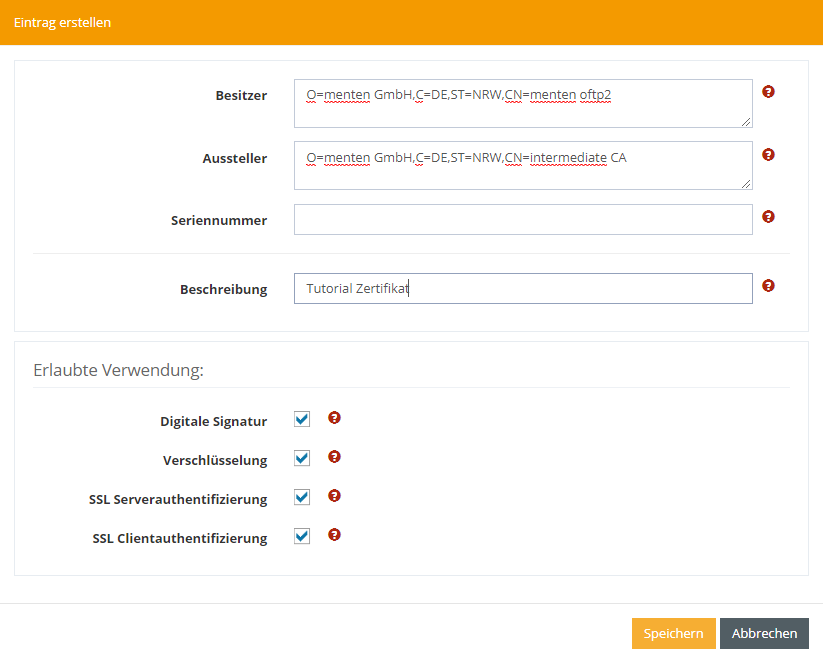Automatic certificate exchange
With OFTP2 it is possible to send certificates to the partner to store them automatically in the configuration. In order for i-effect to know which partner uses a certain certificate, information about this certificate must be stored. You can enter this information in the menu OFTP2 Certificate Recognition under Master Data.

The certificate is recognized on the basis of several pieces of information, including the possible use that is stored in the certificate itself:
- Owner
The owner of the certificate - Issuer
The issuer of the certificate - Serial number
The serial number assigned by the exhibitor - Signature
The certificate can be used for signing. (Included in OID 2.5.29.15)
Encryption
The certificate can be used for encryption. (Included in OID 2.5.29.15)- SSL server authentication
The certificate can be used to authenticate as an SSL server. (OID 1.3.6.1.5.5.7.3.1) - SSL client authentication
The certificate can be used to authenticate as a client on the SSL server. (OID 1.3.6.1.5.5.7.3.2)

To enter for whom and what the certificate should be used, open the submenu: Edit Setup Parameters by right-clicking.

In each entry you can specify in which trust store the certificate should be stored. You can use a standard keystore or enter a path manually. You can select the purposes for which the certificate is to be assigned. If no purpose is specified, the certificate is stored in the keystore and is found as an SSL certificate, for example. The purposes can be assigned to a partner or communication profile.
Optionally, the entry can be limited to one receive profile (*RECEIVE). This entry is only used if this profile receives the certificate.

